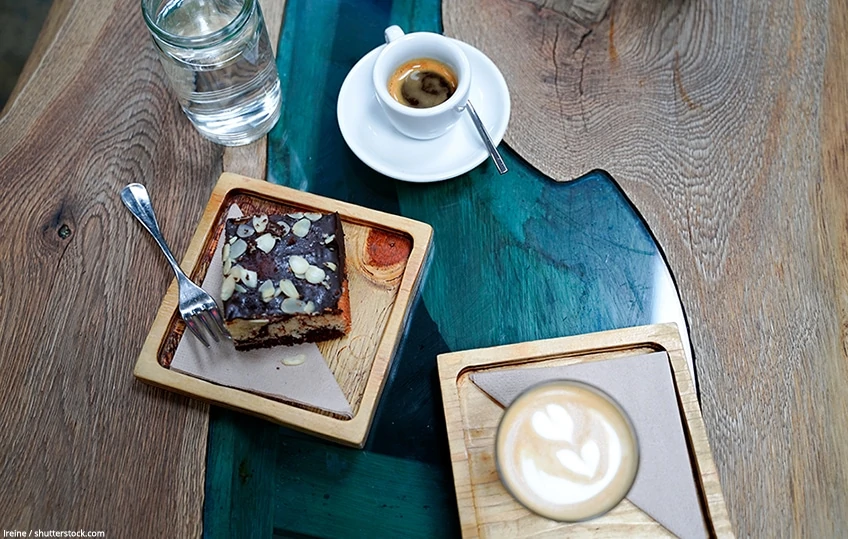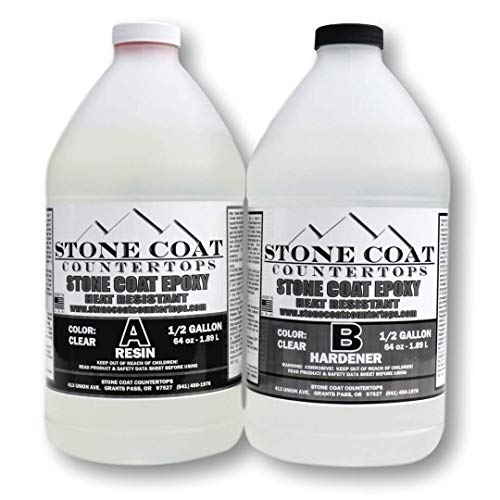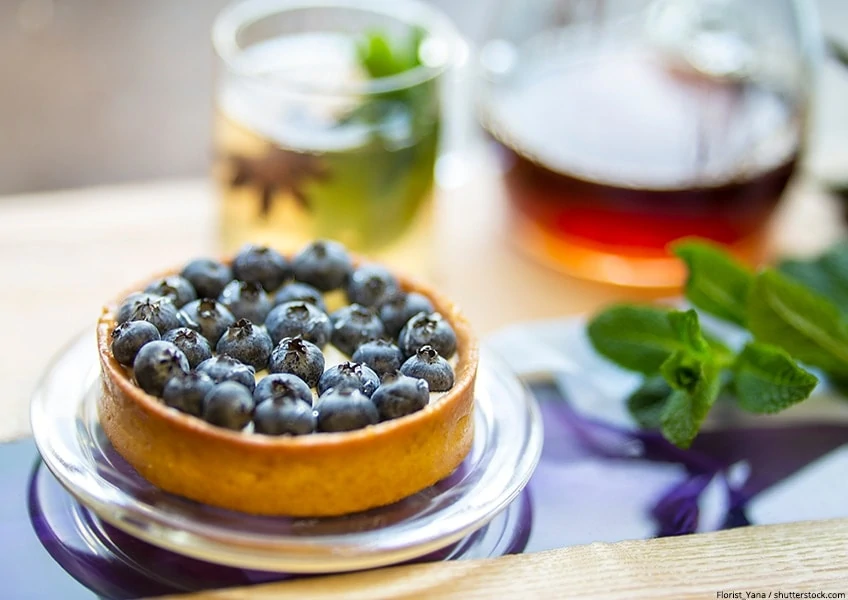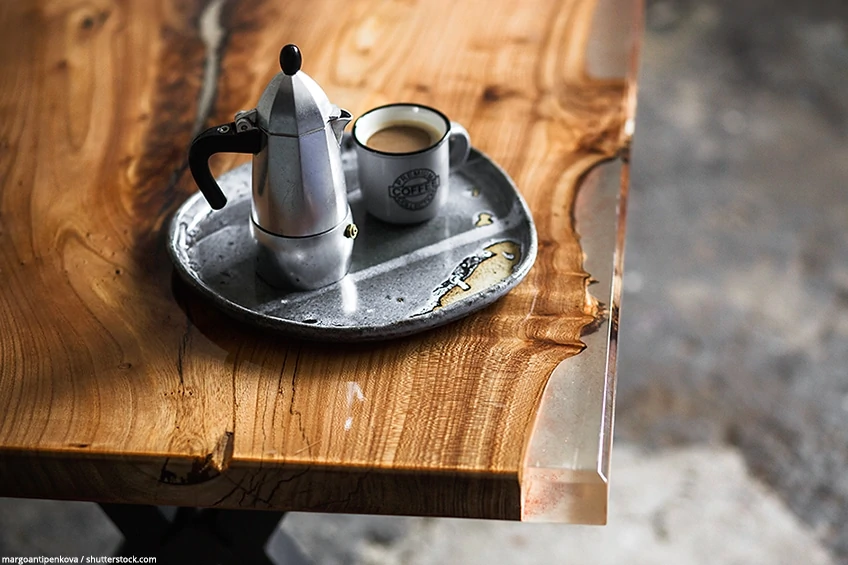Heat Resistant Epoxy – Guide for High Temperature Epoxy Resin
This post may contain affiliate links. We may earn a small commission from purchases made through them, at no additional cost to you. You help to support resin-expert.com
Epoxy Resin appears to be popular with the hobbyists these days, as it is wonderfully versatile. Projects can include many smaller ideas like art or jewellery, but also caters for larger projects such as flooring and boat repairs. Numerous manufacturers produce a variety of different products, which makes it extremely difficult for you to choose the correct product for your particular project. The problem is even more of a challenge if you are looking to buy high-temperature epoxy.
Table of Contents
Is Epoxy Resin Heat Resistant?
It is, but this type of resin is subject to certain conditions. Firstly, your plain or ordinary DIY Epoxy Resin, which is used mainly for smaller projects, begins to distort after it is subjected to high temperatures.
However, high-temperature epoxy resin is completely different. The high-temperature epoxy can withstand higher temperatures without any distortion and is usually used in environments where this is needed. You can also find various heat resistant resin products, which are freely available on the market for anybody to use. These products are made for smaller projects such as coasters, which are exposed to a certain amount of heat.
What Temperatures can Resin Epoxy handle?
The ordinary or basic epoxy will be able to withstand a temperature of between 150°F to 300° F (65°C to 149° C) but only for a short period. However, the heat resistant epoxy will be able to withstand extreme heat of 600° F (316° C), this, however, will be subject to the actual product as well as the manufacturer.
What is High Temp Epoxy Resin?
The heat resistant epoxy resin has been formulated for industrial applications but can also be used for larger projects, such as kitchen countertops. The industrial applications include electrical as well as mechanical repairs. The high-temperature epoxy resin is also used in the motor vehicle and aircraft industries. The high temp epoxy needs to be strong and should last long wherever a bonding agent, sealer or coating agent is needed.
Temperature Limits for Epoxy
When it comes to your standard DIY Epoxy, it can withstand only low heat temperatures between 68°F to 195° F (20°C to 90° C). Anything higher and the molecular structure will change, causing your epoxy to distort or soften. The epoxy will turn rubbery and lose its solid glass-like surface. For this reason, we recommend you use a potholder or coaster on your epoxy surfaces.
However, the high-temperature epoxy is different, as it is specifically made to withstand temperatures as high as 600° F (315°C). This does depend on the type of product as well as the manufacturer. The high-temperature epoxies are manufactured with added fillers such as quarts, or they are reinforced with elements like titanium, which allows them to withstand the high temperatures.
Best Brand for High Temperature Use: Stone Coat Epoxy
Depending on the type of surface you are going to coat, it may be necessary to use a product that can withstand heavy use, as well as resistance to heat. The brand, Stone Coat is an extremely popular high-temperature epoxy resin.
- High temperature Resin - Heat Resistant up to 500°F
- Crystal Clear and UV stable, zero VOC
- Cured in 24 hours, self leveling
What makes Stone Coat Epoxy Resin so popular?
This product helps make your DIY projects at home possible. When working with countertops or tabletops, this product creates amazing patterns and finishes. The Stone Coat Epoxy Resin can also be used on other surfaces in your kitchen, bathroom, any table, or surface you want to restore or renovate.
Pros
- The heat resistant epoxy resin is durable and also provides extra strength and stability.
- This epoxy is flame retardant.
- The resin leaves you with a spectacular polished finish.
- You can be assured of a perfectly level surface.
- The epoxy has been adapted and is, therefore, UV resistant.
- Also, this product is food safe and can be used in your kitchen.
Cons
- Some high-temperature epoxy resin when cured may leave a yellow tint. This is not good if you are looking for a polished clear finish.
- Some epoxy resins require added heating methods while curing. This adds extra time to the curing process.
- A High-Temperature Epoxy Resin may be more expensive.
What to do when working with Stone Coat Epoxy Resin
You should be able to find instructions and videos to follow, which will show you step-by-step how the entire process works. If you are busy doing a DIY project at home, the Stone Coat Epoxy Resin is perfect for you. The resin is not only an excellent product to use for DIY enthusiasts but is also used by designers and contractors with similarly impressive results. Take your old tabletops and countertops create something new, functional, and durable with an incredible finish. Take note that you can only pour a maximum depth of 1/8 inch (or 3 mm) per coat.
Advantages of working with Stone Coat Epoxy Resin
- Going to renovate your old tabletops or countertops? Why not do-it-yourself with Stone Coat Epoxy Resin and save a great deal of money.
- There is a training video that is easy to follow, which guides you through the whole process.
- The product is eco-safe.
- Stone Coat Epoxy Resin contains no VOC’s (Volatile Organic Compounds)
- The finished product will give you a scratch-free, durable, and easy to clean surface.
- Your countertop or tabletop will be able to withstand temperatures up to 500°F (260°C) as it is heat resistant.
- The finish is non-porous and crystal clear.
Simple Steps to follow when working with Stone Coat Epoxy Resin
- You need to accurately measure your resin and your hardener in a 1:1 ratio.
- You must thoroughly mix your compounds for the time required, then add your colors and additives mixing thoroughly again.
- After applying the color coat, use a flat leveling tool and a blow torch or toothpick if you need to remove any bubbles.
- Allow 24 hours after applying the color coat, then apply your clear coat. Now, sand the surface using sandpaper and clean all the dust away using a wet cloth.
- The curing time for the complete job is around 7 days.
- Your countertop or tabletop is now ready for you to use and enjoy. All you need to do is regularly keep your surface clean and try not to scrub the surface.
Tip: To know how much epoxy resin, you require for your project make use of our epoxy calculator.
Reducing your Temperature Resistance
There are many ways to reduce the temperature resistance of your epoxy resin. First, be sure you stick to the mixing ratio, as any deviation can change the properties of your epoxy resin. This does not only apply to the mixing ratio; you also need to stick to the mixing time and follow any other instructions the manufacturer has provided.
When you need to add any other additives like inks or pigments, remember that this may automatically reduce your temperature resistance. To get around this, you need to add a clear top coat which will then enhance the heat resistant characteristics.
Tips to help you when working with Heat Resistant Epoxy Resin
As we have mentioned, to achieve the best results, you must adhere strictly to the instructions provided by the manufacturer. Deviate in any way, and you will not have the desired finish or result. Make sure that you only mix enough resin to suit your project, this will help you to apply the resin in the time you need.
- Preparation is vital as time is critical during the entire process.
- Have your worktable the correct height so that you can avoid any back pains.
- Before you start on your project, use some Isopropyl Alcohol on a cloth and wipe your surface clean from any dust particles.
- To obtain accuracy when mixing your resin, use of a timer. This will allow you to come out with an even consistency.
- The temperature, as well as the humidity of your workspace, can affect the finished product. Cold temperatures can result in your epoxy having a sticky or tacky finish. If you want to reduce the possibility of this happening, it is recommended you warm your resin before you mix it with the hardener.
- If you are working on a fairly large flat surface and you want to get the epoxy resin evenly spread, make use of a levelling tool or trowel.
- During the process, if you make use of a paintbrush, ensure that it is of good quality to avoid any bristles being shed. You can make use of a dark paintbrush so that if any bristles are shed, you can see them easily take them out.
- Have air bubbles? Try and pop them using a toothpick or a blowtorch, but only for a few seconds. You need to hold the blowtorch about 20 cm from your workpiece to avoid the resin from dimpling. You also need to remember, that if you have added any alcohol inks to color your resin, it is not advisable to use a blowtorch to remove any bubbles. If you are finding it difficult to remove the bubbles, you can try a blow dryer that is set at its highest heat setting, however, this method takes much longer.
- Using a blowtorch? Start it a distance from your project to avoid any particles of dust blowing onto your work surface.
- When you have finished, let your resin project cure in a dust-free space.
- Remember, when you add powders or pigments to your resin, you are altering the molecular structure of the resin. This will reduce its heat resistance as well as its non-toxicity. Always finish your project by applying a clear top coat so that you will be able to put hot objects on it.
- Have some epoxy you want to clean up after you have finished? If it is still wet, you can use acetone on a clean cloth. But if it has already cured, on the floor or elsewhere, you will have to use your blowtorch to first heat it up and then use a screwdriver or flat trowel to scrape it off.






